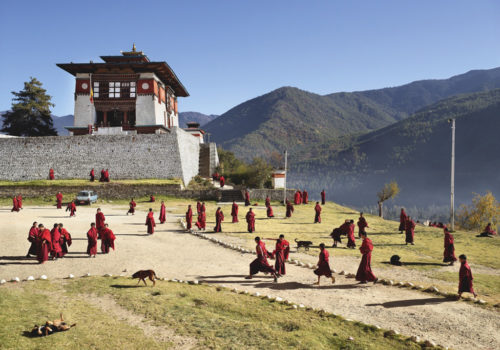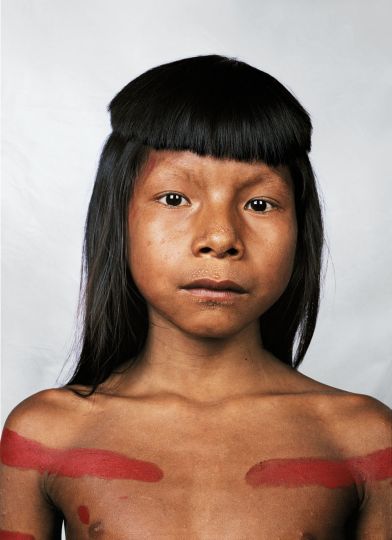In conjunction with his new series of photographs, Aperture Foundation New York published his book ‘Playground’.
The playground is a seemingly pleasant, fun and enjoyable topic. However, schools are a serious and important part of our lives. Here we develop, and during the short breaks between classes we indulge in important interactions, which are usually unmonitored by the teachers and cannot be fully supervised. Real life begins in the playground, where we either have to strive for survival or status. Cliques form, gossip spreads, fights begin. Many of us remember being bullied, pushed over, laughed at. This can be especially observed in Mollison’s photographs of the schools in the UK.
Social problems arising during recess in Western societies pale in comparison with those in underdeveloped countries. In many places the situation that children endure cannot be influenced by their behaviour, as they were born to a hard life. In some cases they have no other option but to spend their free time on heaps of trash with animals. In other areas teachers have to check them for traces of sexual abuse. In some countries life is exposed to the constant danger of war. This can be observed in the photographs taken in the Middle East and Africa.
Despite the fact that Mollison touches upon crucial issues, such as politics, global diversity and inequality, his photographs are not merely documents of social history. They have a strong artistic value, attained by colour, contrasts and composition. Taken from a raised point, they present the viewer with the essence of human interaction; a multitude of small Shakespearean dramas simultaneously taking place. What is more, there is no connection between the photographer and his subjects, who make no eye contact with the viewer. They seem to be captured in their natural habitat, without the interference of the outside world.
Observing children at play evokes genre paintings of Old Dutch and Flemish Masters, especially that of the Flemish renaissance artist, Pieter Breughel the Elder, for example, his work Children’s Games (1560). Here, as in Mollison’s photos, children indulge in seemingly innocuous games; however, on looking more closely you may discover some menacing and rather sinister behaviour. Although the meaning of this painting remains unclear, one of the many interpretations presents children as small adults whose actions reflect what they have learned from their observation of adult daily life.
Given the diverse settings, races and cultures captured in Mollison’s photographs,you might expect strong contrasts between them. And these are indeed apparent at first glance. But the more you think about the children’s behaviour the less important these differences seem. As Mollison himself stated, “Although the schools I photographed were very diverse, I was struck by the similarities between children’s behaviour and the games they played.”
James Mollison was born in Kenya in 1973 and grew up in England. After studying Art and Design at Oxford Brookes University, and later film and photography at Newport School of Art and Design, he moved to Italy to work at Benetton’s creative lab, Fabrica. His work has been widely published throughout the world including by Colors, The New York Times Magazine, the Guardian, The Paris Review, The New Yorker and Le Monde. His book ‘The Disciples’ was published in October 2008. In 2007 he published ‘The Memory of Pablo Escobar’- the extraordinary story of ‘the richest and most violent gangster in history’ told by hundreds of photographs gathered by Mollison. It was the original follow-up to his work on the great apes – widely seen as an exhibition including at the Natural History Museum, London, and in the book ‘James and Other Apes’ (Chris Boot, 2004). It was in 2010 when Mollison launched his widely acclaimed series ‘Where Children Sleep’ presenting photographs of children’s bedrooms around the world–from the U.S.A., Mexico, Brazil, England, Italy, Israel and the West Bank, Kenya, Senegal, Lesotho, Nepal, China and India–alongside portraits of the children themselves. For his latest series, ‚Playground’, Mollison has photographed children at play in school playgrounds. The series was published by Aperture in April 2015 and launched in New York followed by a solo exhibition at Flatland Gallery in Amsterdam. Mollison lives in Venice since 2003.
EXHIBITION
Playground by James Mollison
From May 16th to June 27th, 2015
Flatland Gallery
Lijnbaansgracht 312 – 314
Amsterdam
The Netherlands

















